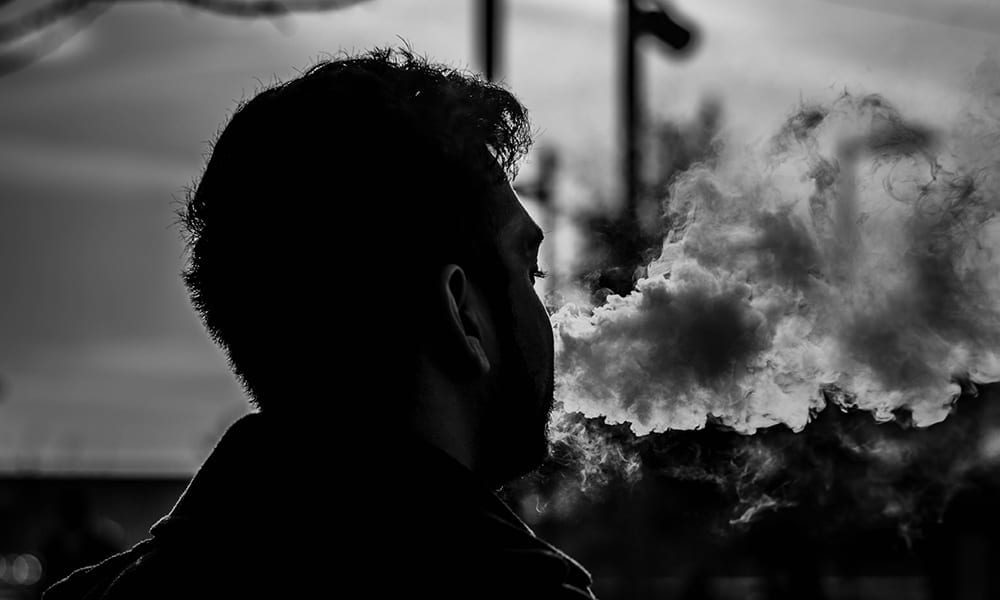Educational, Extracts, Food and Drug Administration, Health and Wellness News, Industry News, Research
A Quick Guide to the Vaping Health Scare: What We Know So Far
By
A wave of vaping-related pulmonary illness is shaking up America. The first reported illnesses first broke out over the summer and have now killed dozens and sickened thousands across the country. Researchers have linked the illnesses to chemicals additives in both tobacco and cannabis vapes purchased on the illicit market.
A regulatory crackdown on the vaping industry has ensued, but amid serious confusion. Both politicians and some media outlets have purveyed misinformation about the illnesses that betray a poor understanding of vaping, the difference between the legal and underground markets and the distinction between cannabis and tobacco vapes in general.
So, in the name of clarity, here’s an overview of what we know so far about the vaping health scare.
How many people have been sickened so far?
The federal Centers for Disease Control report that, as of Nov. 20, it had registered 2,290 cases of what it is calling “e-cigarette or vaping associated lung injury” (EVALI). Cases have now been confirmed in every state except Alaska. Forty-seven deaths have been confirmed in 25 states and the District of Columbia. The CDC says that the median age of the deceased is 53, but this seems to be due to a handful of older patients driving up the average; a breakdown by age group shows young people are disproportionately affected. The youngest, a boy from the Bronx, died when he was only 17.
The CDC research noted 1,184 cases in which patients said they had “complete information” on exactly what products they had used prior to onset of symptoms. Of these, 35% reported they had used only THC-containing vapes, 13% reported they exclusively used nicotine products and 48% said they used both. Four percent reported neither THC nor nicotine product use — a mysterious category which is not explained.

What do officials think is causing the problem?
The Food & Drug Administration reports that it has received over 1,100 samples from 25 states, with roughly 895 of these samples connected to patients. The samples were collected directly from consumers, hospitals and state offices and have included vaping devices and products containing varied levels of liquid. Overall, 689 of the samples connected to patients have undergone some level of testing.
Of these, 445 samples were found to contain THC, of which 48% were diluted with vitamin E acetate, in concentrations ranging from 23% to 88%. Additionally, 24% of these THC products were diluted with other chemicals, such as medium-chain triglycerides.
The FDA issued a statement in September naming vitamin E acetate as a chemical culprit in the vaping illnesses, and the updated research may bear this out. Vitamin E acetate is simply a liquid oil form of the vitamin, and is widely used in skin-care products. Inhaling it, however, appears to carry serious hazards. It appears that illicit vape makers have been adding vitamin E acetate to vapes in order to dilute the cannabis oil and make more money for less.
What can people do to avoid bad vapes?
Given that vitamin E acetate is not typically used in cannabis vape products produced for the regulated market, it seems likely that illicit-market vape carts are responsible for a good proportion of the illnesses and deaths. Many of those reporting having used THC products before taking ill were not even in states where such products are legal — meaning what they used was almost certainly purchased on the illicit market.
However, not all states with legal cannabis have explicitly banned the use of vitamin E acetate in THC vape products, so it is still possible that some legal cannabis vapes could contain this or other dangerous additives. Therefore, in addition to buying your vape product from a state-licensed dispensary, it’s best to also read the testing label (from a verified testing lab) to make sure the product only contains material actually derived from the cannabis plant, which includes making sure the vape has no heavy metals.
Read more from the source: CannabisNow.com
Title Photo: Lee Phillips


